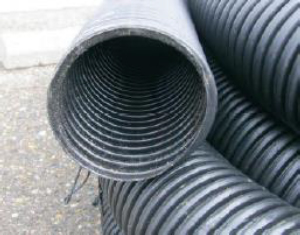

| Topic: Using Vacuum Trucks to Remove Wood Dust | |
| Date Issued: August 6, 2019 | Date Revised: |
Static electricity can be hazardous
The wood products industry can create large amounts of wood dust. This wood dust is combustible and must be safely removed before it builds up and creates a fire hazard or a combustible dust explosion hazard. Vacuum trucks can safely and effectively remove wood dust from buildings, machinery, and equipment, if suitable equipment and safe work procedures are used.
Industry employers and vacuum truck operators need to be aware of the hazards of static electricity when vacuuming wood dust. Since static electricity discharges can ignite wood dust, they must be eliminated or controlled during vacuuming.
Choose suitable hoses, nozzles, and connectors
When wood dust or other fine, dry materials are vacuumed through a hose (or pipe), the friction between the dust and the hose can generate static electricity. If the hose is made of a material that conducts electricity and is properly grounded, the static charge will safely dissipate into the earth. However, if the hose is nonconductive, a static charge will build up on its interior surface and could discharge with enough energy to ignite wood dust or other combustibles.

Do not use hoses with ridged or corrugated interiors (as shown) to vacuum wood dust.
Since plastic does not conduct electricity, plastic hoses are not safe for vacuuming wood dust unless they are embedded with a static wire. Also, hoses that have ridged or corrugated interior surfaces should not be used for vacuuming wood dust. Using hoses with ridged interior surfaces results in more physical interaction between the dust particles, and between the dust particles and the hose, than using hoses with smooth interior surfaces. This increased interaction results in a static charge with higher amounts of static energy, making static discharge more likely.
When vacuuming wood dust or other dry combustible materials use only conductive hoses, nozzles, and connectors designed for use with those types of materials. If unsure whether a hose or other equipment is safe to use for vacuuming wood dust, check the manufacturer’s instructions.
Ensure proper grounding and bonding
Staying safe while vacuuming wood dust requires proper grounding and bonding of all equipment. Ensure that trucks are grounded directly to the earth or another verified ground source before vacuuming starts. Also, ensure the hoses and all other truck and vacuum system parts are properly bonded to each other.
Pay particular attention to ensuring proper bonding in baghouses. The risk of dust ignition is high in baghouses because of the high volumes of dust and air that flow through them. Ensure an adequate bond between the truck’s baghouses and its filter cages. To prevent static electricity from building up on the surfaces of baghouses and other conductive equipment, the total bonding resistance to ground should be less than 100 megohms. Use an ohmmeter or megohmmeter to verify the resistance.
Inspect and maintain equipment
Regularly inspect and properly maintain vacuum trucks. Pay particular attention to potential problem areas such as hoses, baghouses, vacuum pumps, collection boxes, and filtration systems. Test conductive hoses regularly and remove them from service if they have lost conductivity.
Poor maintenance of vacuum pumps and blowers can result in excessive heat and contact between metal parts, such as blower lobes. When a baghouse on a vacuum truck is poorly maintained, dust can ignite when it is carried over from the baghouse onto the hot surface of the vacuum pumps.
Employer responsibilities
The following safety requirements are relevant to vacuum truck operators and employers who hire vacuum truck operators to remove wood dust.
Employers must: